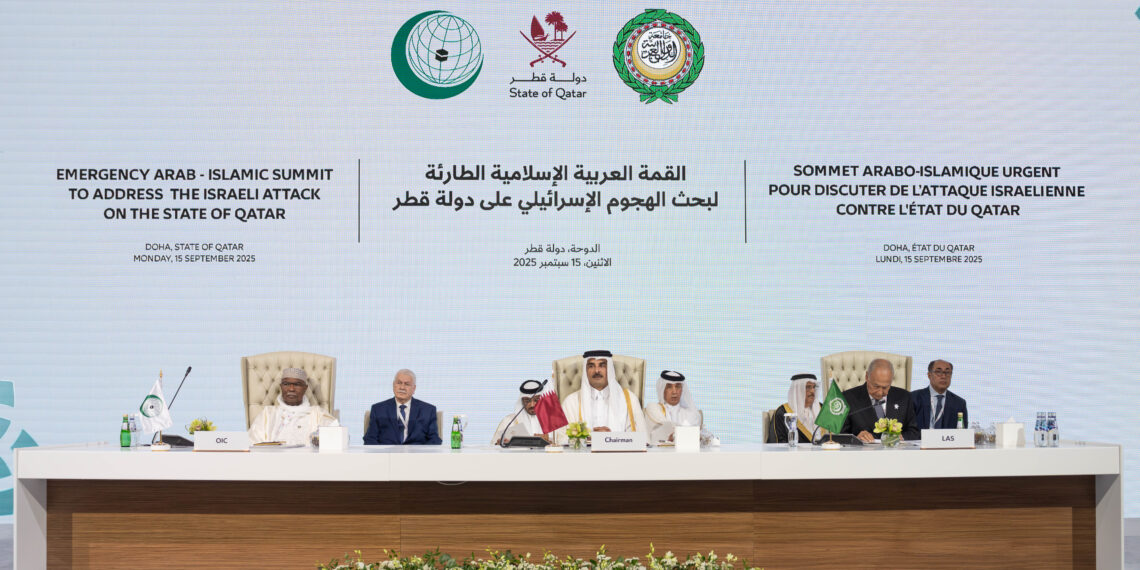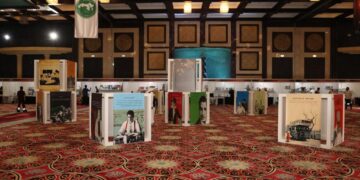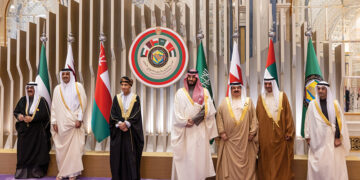As part of his visit to the Gulf region, U.S. President Donald Trump participated in the Gulf-U.S. Summit held in the Saudi capital, Riyadh. The summit took place on the second day of Trump’s regional tour, which also included official visits to Qatar and the United Arab Emirates, aimed at strengthening political, economic, and security partnerships between the United States and Gulf countries.
Chaired by Saudi Crown Prince Mohammed bin Salman, the summit focused on enhancing the strategic partnership between the Gulf Cooperation Council (GCC) countries and the United States, addressing several regional issues, including collective security, economy, and stability in the Middle East. Discussions also covered ongoing developments in Palestine, Syria, Yemen, Lebanon, and Sudan.
In his speech, the Saudi Crown Prince highlighted the strength of economic relations, noting that trade between the Gulf states and the U.S. reached approximately $120 billion in 2024, reflecting the depth of existing cooperation. He emphasized the importance of reaching a just resolution to the Palestinian issue in line with the Arab Peace Initiative and international resolutions, called for continued dialogue among Yemeni parties to achieve a comprehensive political solution, and praised the U.S. decision to lift sanctions on Syria, describing it as a step toward restoring stability. He also stressed Syria’s territorial unity and sovereignty , demanded an immediate ceasefire in Sudan, and urged support for Lebanon’s stabilization efforts amid its current political changes.
U.S. President Trump commended the economic progress of Gulf countries, describing them as “among the most advanced and prosperous nations,” and affirmed that the world closely monitors their investment and economic opportunities. He emphasized the need to ensure a “safe and dignified future” for Gaza’s residents, called on Iran to cease supporting armed militias in the region, and reiterated his commitment to lifting sanctions on Syria as part of his administration’s efforts to promote regional dialogue and peaceful resolutions. Trump expressed optimism about Lebanon’s future following the election of a new president and government formation, stating there is a real opportunity to build a future free from Hezbollah’s negative influence, as he put it.
On the sidelines of the summit, a trilateral meeting was held in Riyadh, bringing together U.S. President Trump, Syrian President Ahmad al-Sharaa, and Turkish President Recep Tayyip Erdogan via video conference, under the auspices of Crown Prince Mohammed bin Salman. This meeting signaled a clear openness toward “post-war Syria,” amid diplomatic efforts to end years of international isolation. The discussions focused on Syria’s future, ensuring its stability and unity, and working toward security and prosperity for the Syrian people.
The U.S. President’s visit to Saudi Arabia was part of a broader Gulf tour that also included the UAE and Qatar, where he held meetings with the leaders of both countries to discuss ways to enhance bilateral cooperation and coordinate positions on regional and international issues, including developments in Gaza, the Iranian nuclear issue, and energy security.
This Gulf tour is part of a broader U.S. strategy to reshape its relations in the Middle East, reflecting the region’s geopolitical and economic changes and enhancing partnership opportunities to address shared challenges.







